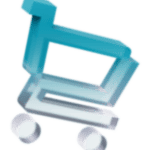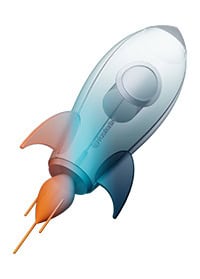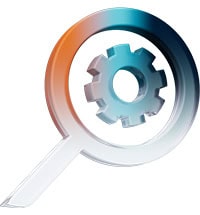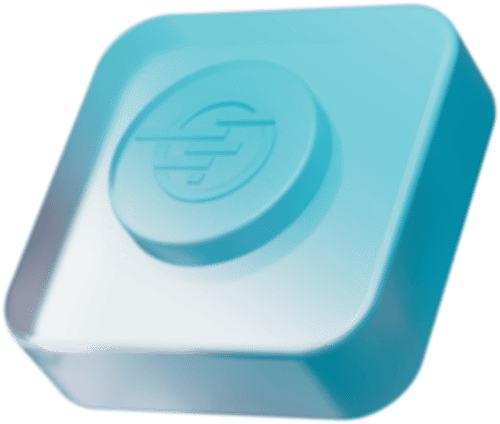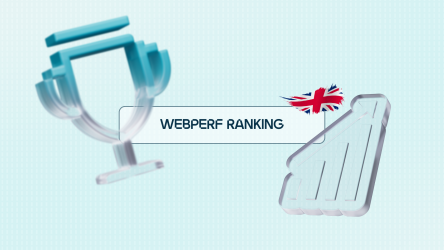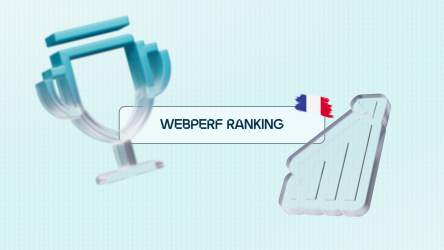You’re already working hard to optimize your loading speed, for content that displays quickly in the browser, satisfied and loyal customers, and relieved servers. Great! This is a very good approach. But is there an end to all this work? We invite you to discover why you must continue this work tirelessly, and why optimizing a site that already seems fast to you has even more impact than optimizing a slow site. Welcome to the virtuous circle of web performance.
Loading speed: the key to conversions
CRO, CA, SEO, UX, SXO… The conversion rate is surely at the heart of your objectives, and as you know, loading speed is an essential lever to improve it. Note that 83% of Internet users in France believe that page loading speed is important for their online shopping experience, which is why a fast site is essential to ensure the quality of the user experience and customer satisfaction. It is also one of Google’s evaluation criteria for ranking web pages, in addition to server response time ( Time To First Byte , or TTFB). As part of its Page Experience update , the search engine is integrating Core Web Vitals into its algorithm. These are 3 metrics that measure the speed of web pages and assess the quality of the user experience:
- the Largest Contentful Paint (LCP) which evaluates the display speed,
- the First Input Delay (FID) which evaluates interactivity,
- the Cumulative Layout Shift (CLS) which assesses visual stability.
If you are interested in your web performance (webperf), you may have already defined objectives, or even a performance budget .
Your technical, marketing, product teams, etc. work hand in hand to make the user experience as smooth as possible on your site. Another option: you rely on plugins or extensions to speed up your pages according to your CMS , in order to optimize your code, your files and your HTML / JavaScript / CSS resources, compress your images, take advantage of the benefits of a CDN , etc. Is it possible to go even further? Always! Will you be able to see a return on investment? Yes! Let’s see how optimizations, even on an already fast website, translate into hard cash.
Loading speed and business gains
“ 100 milliseconds lost is 1% less turnover ”. You have probably already seen this data from an Amazon study. But be careful, not all milliseconds are equal.
Let’s start by looking at this curve which shows the correlation between loading speed (abscissa) and conversion rates (ordinate).

Correlation between loading speed and conversion rates
We see that the variation in conversion rates is much more significant (downward) in the first seconds of loading, compared to the rest of the curve.
Indeed, in the first period marked by the orange markers, we see that 1 second of loading time represents an evolution of 1 point on the conversion rate.
On the other hand, for the second period marked by red markers: 1 second represents only 0.1 point of variation in conversion rates.
Speeding up a fast site by 1 second doesn’t have the same impact as saving 1 second on a slow site.
To measure the business value of a second based on a site’s loading speed, we tested it with Google’s Test My Site tool , which simulates the impact of speeding up pages on revenue.
We observed the potential gains if loading was one second faster for the pages of two large French websites, for which we entered the following KPIs in Test My Site (for comparison, we assumed that they had the same audiences, conversion rates, and average basket):
- Ecommerce site for computer products
- Tested page speed: 2.2 s
- Monthly visitors: 3 M
- Average basket: $150
- Conversion rate: 1.5%
- Furniture Ecommerce Site
- Tested page speed: 4.8 s
- Monthly visitors: 3 M
- Average basket: $150
- Conversion rate: 1.5%

With equal traffic , we see that improving the loading speed by 1 second has an impact on turnover approximately 2.5x greater for the IT products site.
The moral of the story is this: speeding up a fast site has a much bigger impact than speeding up a slow site! So, just because your website is “already” fast doesn’t mean you shouldn’t do anything. On the contrary, by optimizing it further, you’ll be able to generate even more gains!
So, here’s a tip: save your Internet users time, and take advantage of it to save yourself some too: automate best practices and techniques to optimize your frontend .
In short, move up a gear.
Webperf optimizations: move up a gear
As you can see, the business impact of frontend optimization is even greater on a fast site than on a slow site. But you should know that speeding up a fast site is also more complex than speeding up a slow site , because you have to succeed in identifying the techniques that allow you to save even more milliseconds, and above all, manage to implement them.
Indeed, on a slow website, the essential best practices will probably be obvious: compress images , adopt a CDN , prioritize scripts… as we mentioned earlier. But once these techniques are applied, how can we go even further to improve technical performance and turnover?
This is where automation is essential , and this is precisely Fasterize’s job! Automating webperf optimizations allows you to gain in efficiency, and by using a complete solution rather than a plugin , you activate all the levers for improving your loading speed: the code and resources of your entire site are optimized (HTML, CSS, JavaScript, image files, etc.), for benefits on your user experience but also on your business and your SEO. In addition, you save resources (and budget), and your performance is automatically maintained over time , rather than having to take it up again each time the site evolves.
Some examples? While the Ecommerce site But.fr was already working on its web performance, the CTO opted for the automation of all optimizations , in order to relieve his team and ensure sustainable performance. The site thus deployed in 3 weeks projects initially planned for 12 months: intelligent cache system , CDN , HTTP/2, Brotli compression , etc.
The same goes for Conforama, which was already working on its loading speed on the backend side , and which wanted to push its performance even further by automating the optimization of its frontend. Result: loading times divided by more than 5 .
One last practical case for the road (by bike): Alltricks, which, by automating the optimization of its loading speed, saw its SEO traffic increase by 25% .
Want to know how our frontend optimization engine can impact your performance and conversions?
